The Artist
Susanne Kriemann (*1972, Erlangen) is an artist, Professor of Code & Image at the Karlsruhe University of Arts and Design and lecturer at NYU Berlin. Together with Aleksander Komarov, she has been organizing the artists’ initiative ABA AiR Berlin Alexanderplatz since 2010. With an expanded concept of the photographic document, Susanne Kriemann explores landscapes as analog “recording systems” for man-made processes. Ecology is prevalent both in her motifs and in her working methods. An essential feature of her work is the use of the researched material in prints and exhibitions. This approach is interwoven with archaeological and geological research, so that the (distant) past can be overlaid with the shared present and a speculative future. For several years, Susanne Kriemann has been exploring the idea of collaboration with beings or aspects of nature that are not traditionally considered human.
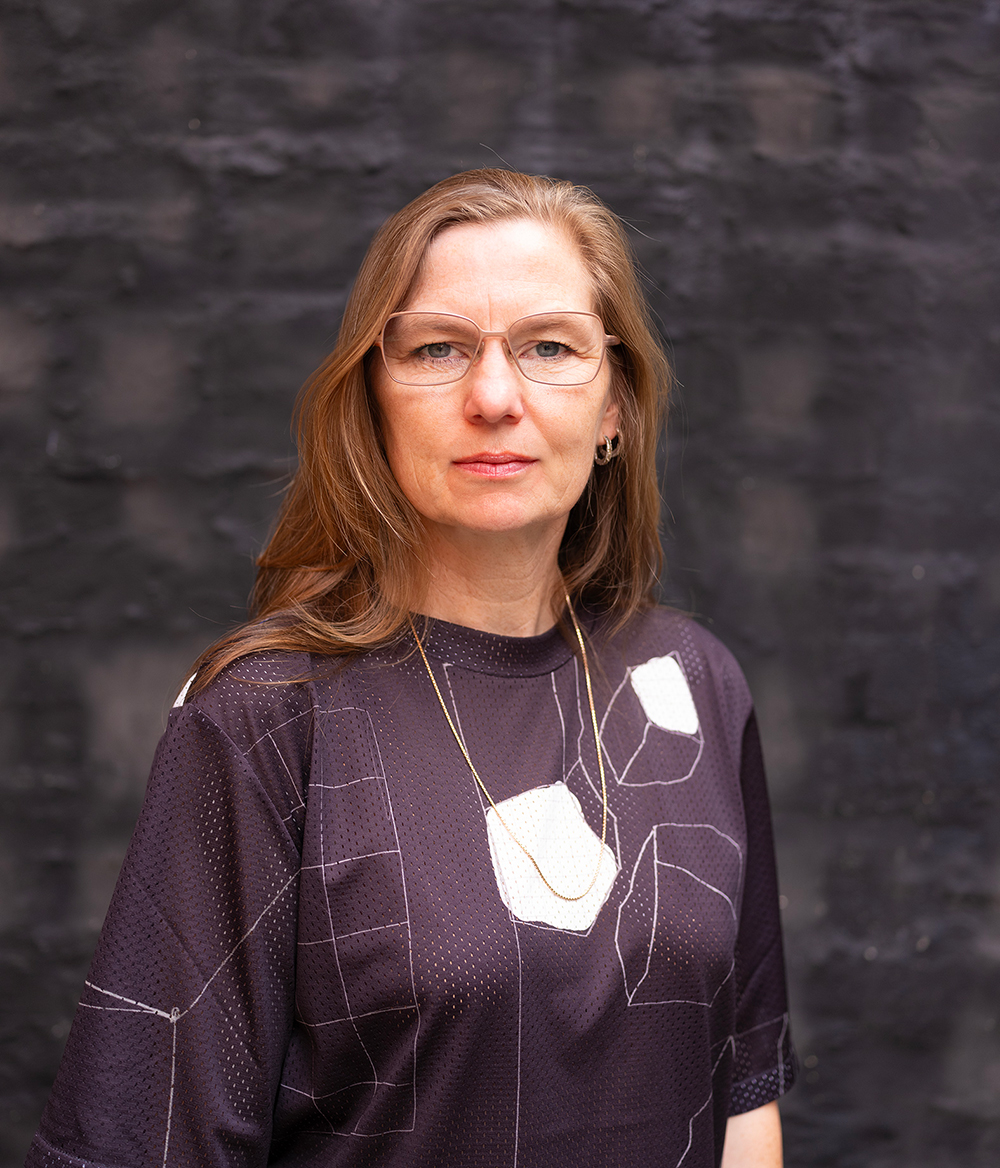
Novel work for public urban space
“Hey Monte Schlacko, Dear Slagorg” (2024)
The 2023/24 residency year was designed by scholarship holder Susanne Kriemann. For her installation of the work, she and her team activated the shop windows of all floors of the vacant Karstadt building in Siegen city center.
Large-format prints and textiles were mounted and hung on the façade, in the display cases and partly also inside the department store. They show different views of the slag mountain, known locally as “Monte Schlacko”: Lots of mosses and lichens, but also flowers that hold their own in the barren world of rock and slag.

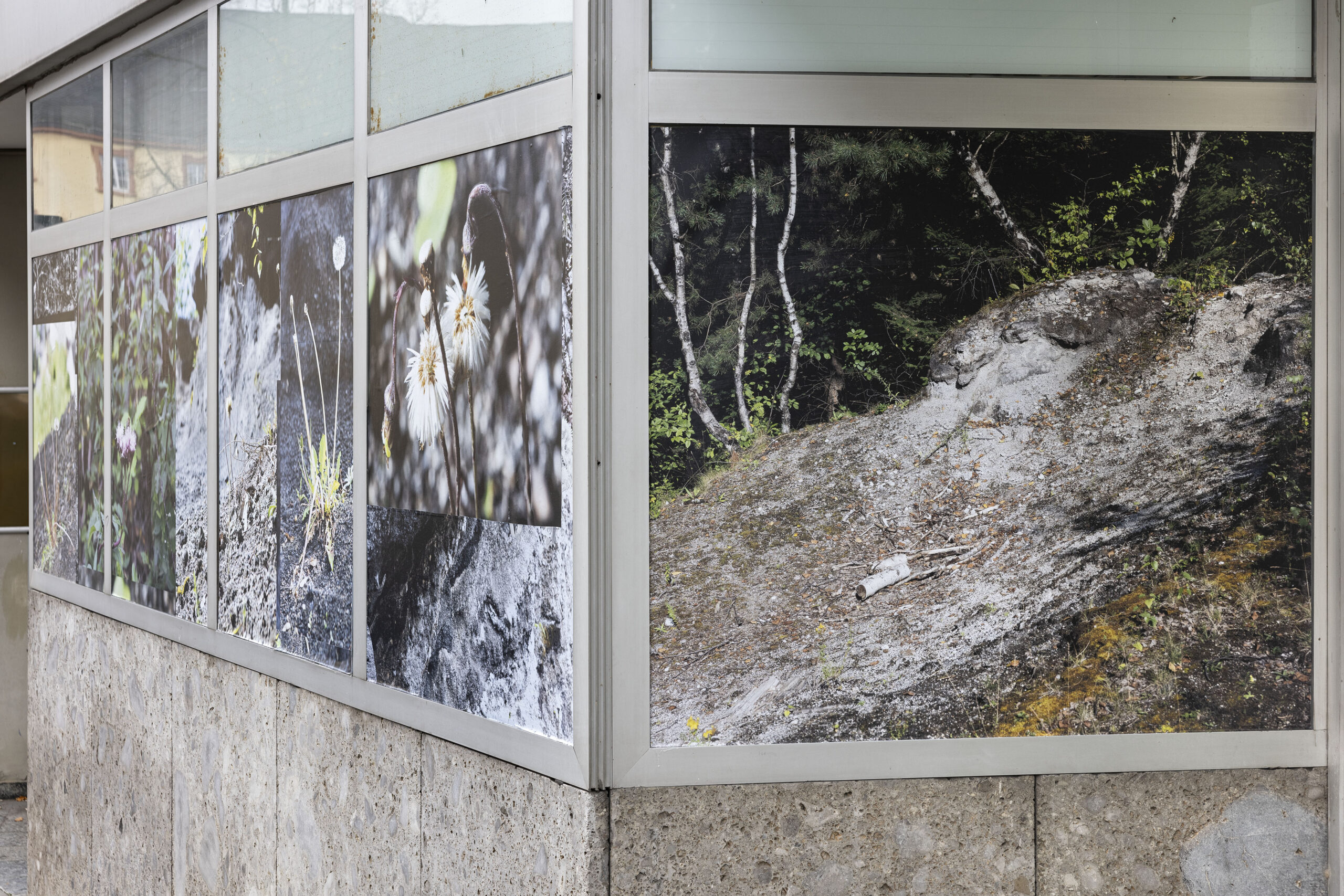
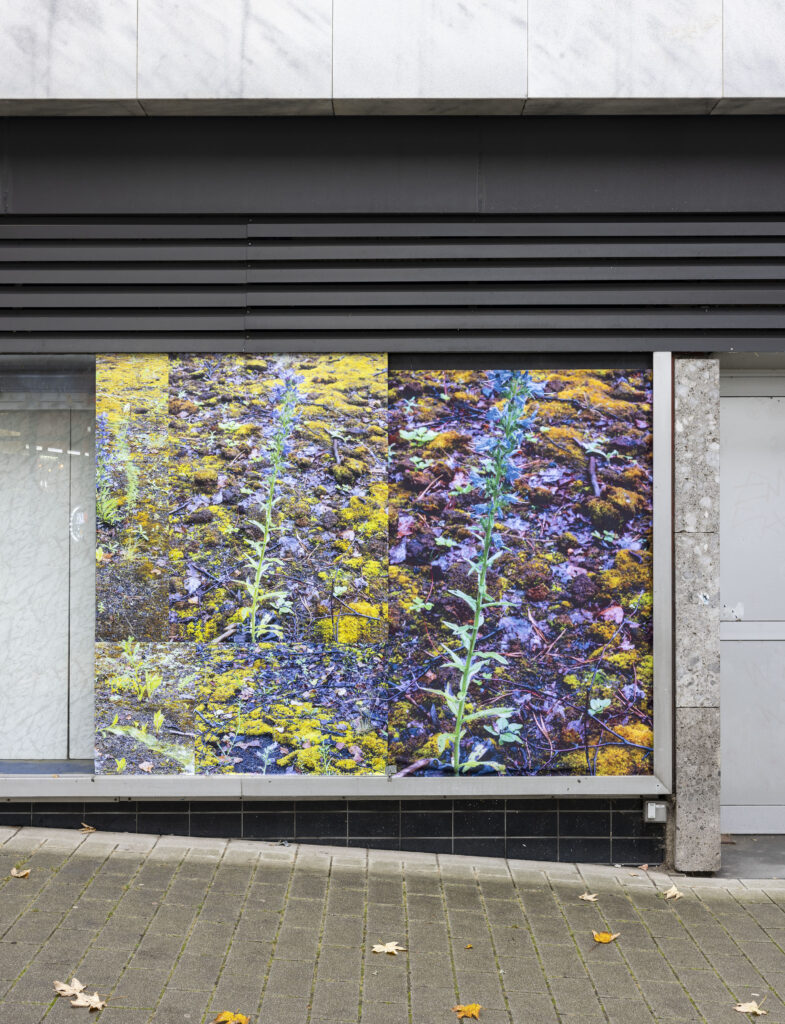
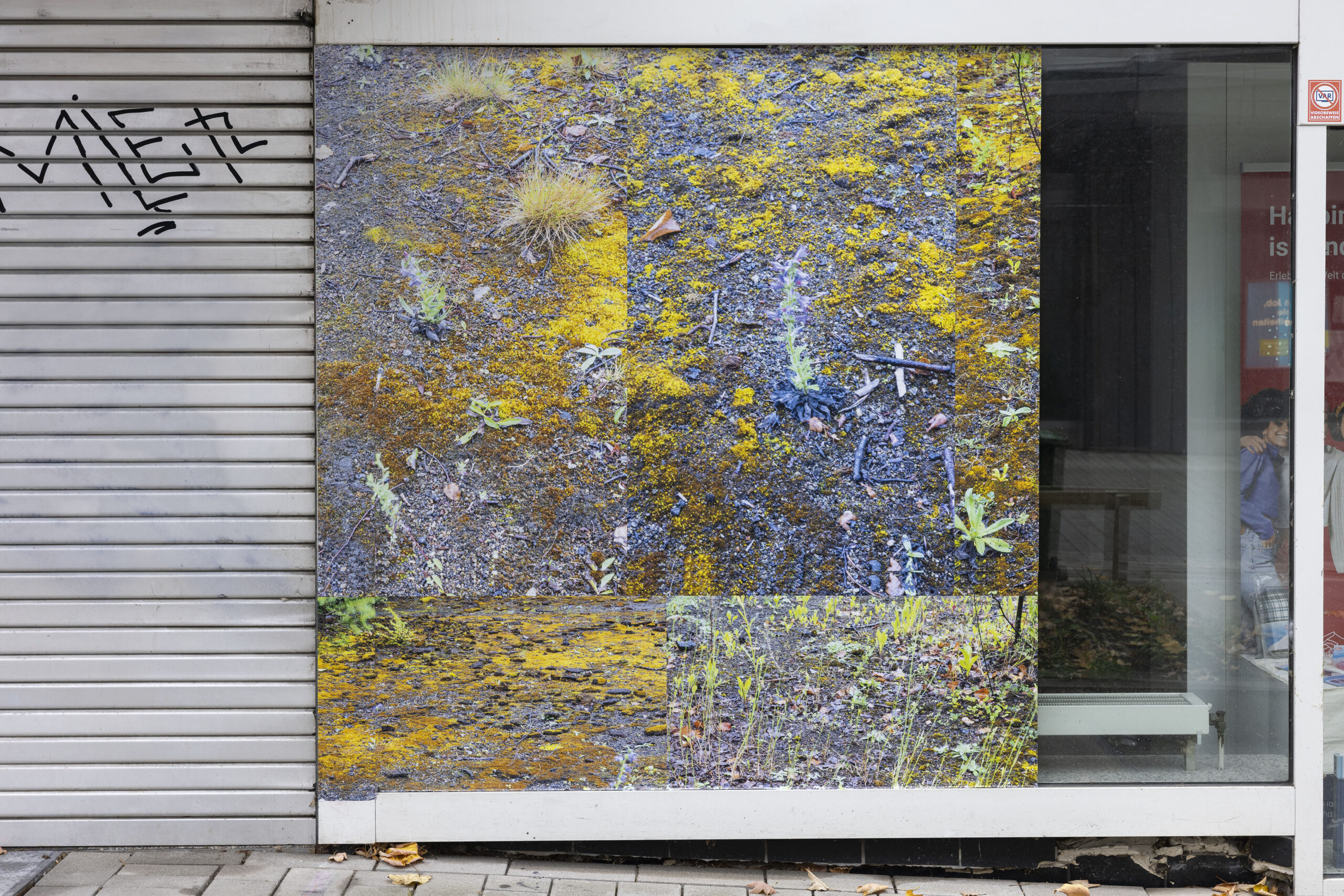
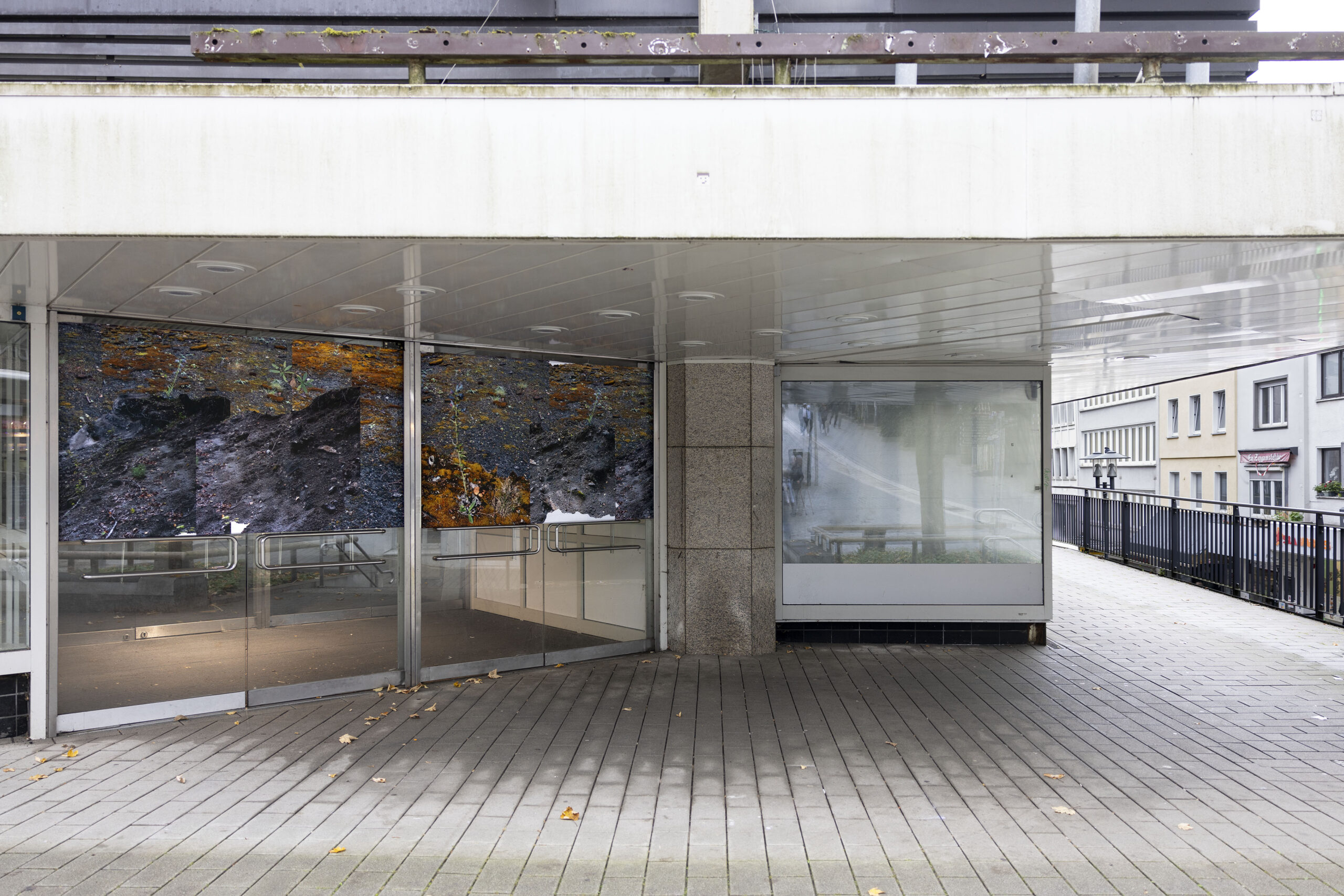
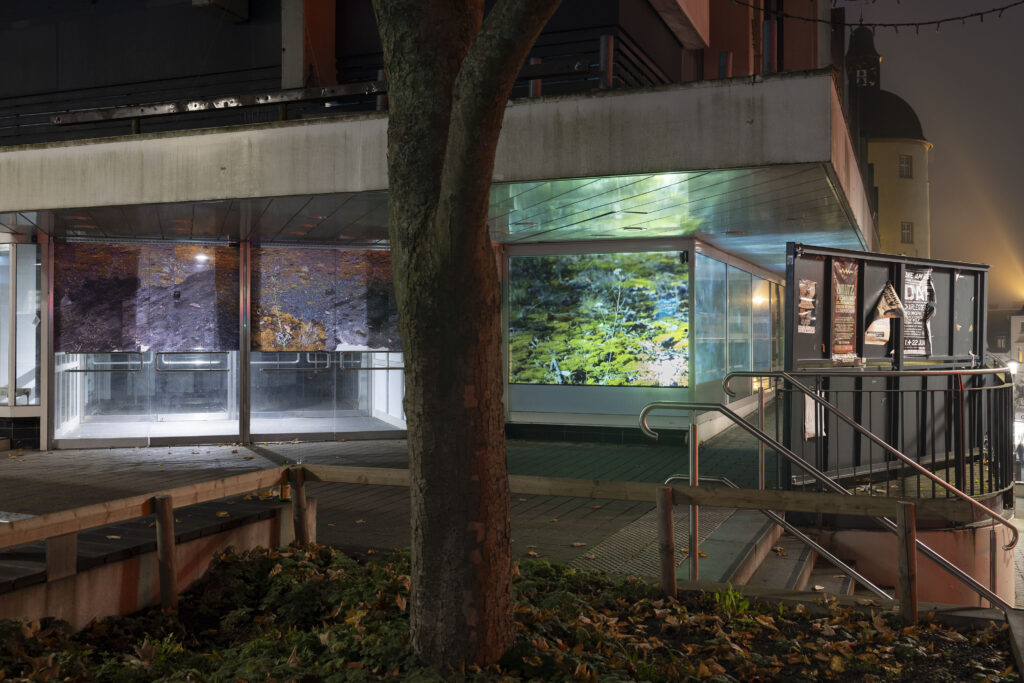

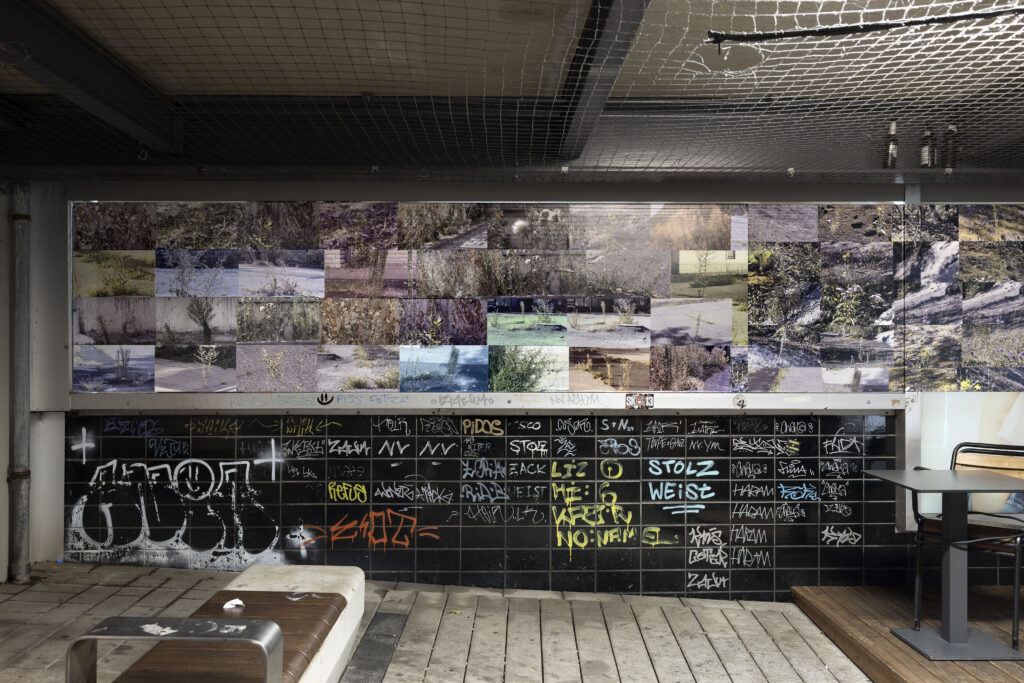

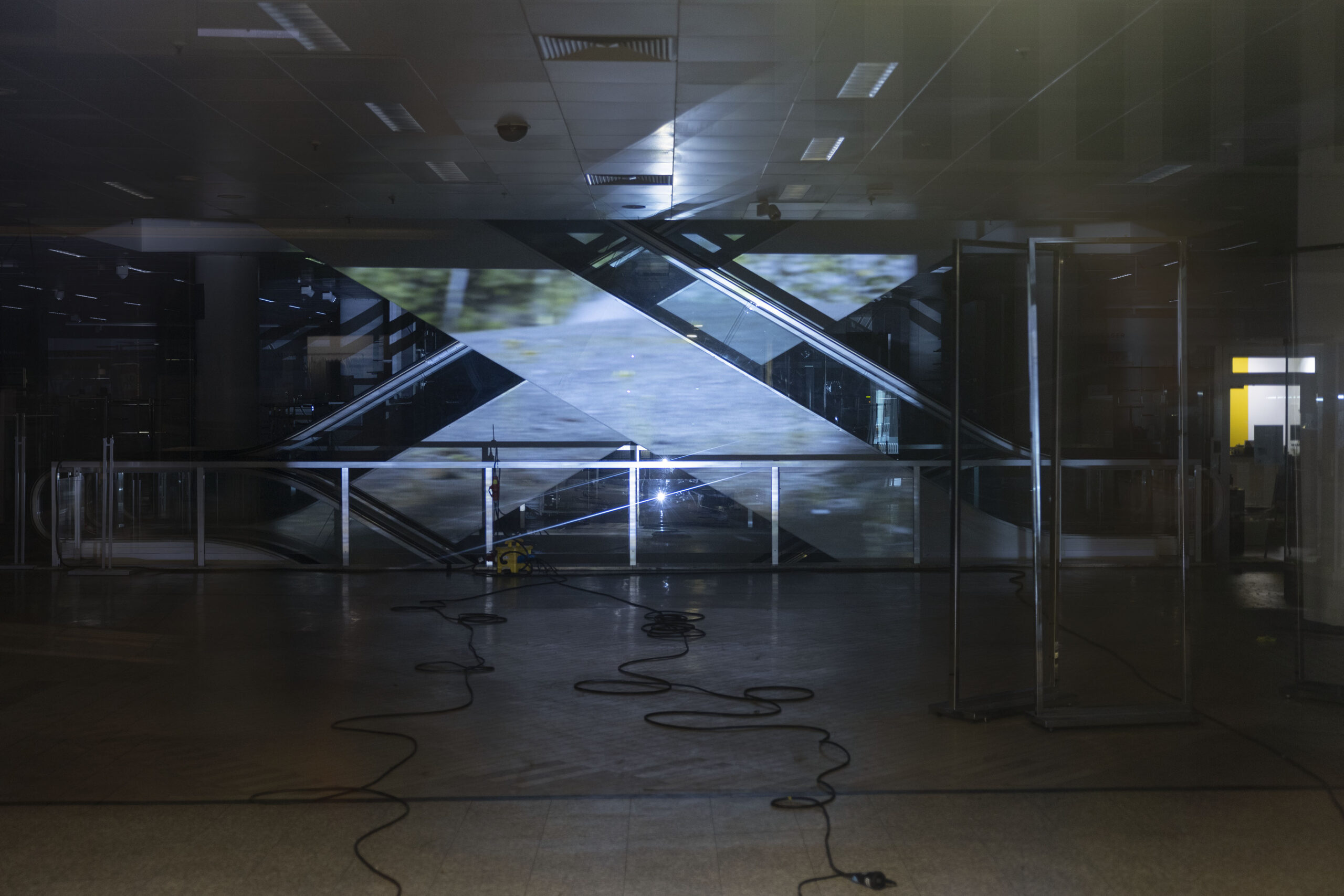


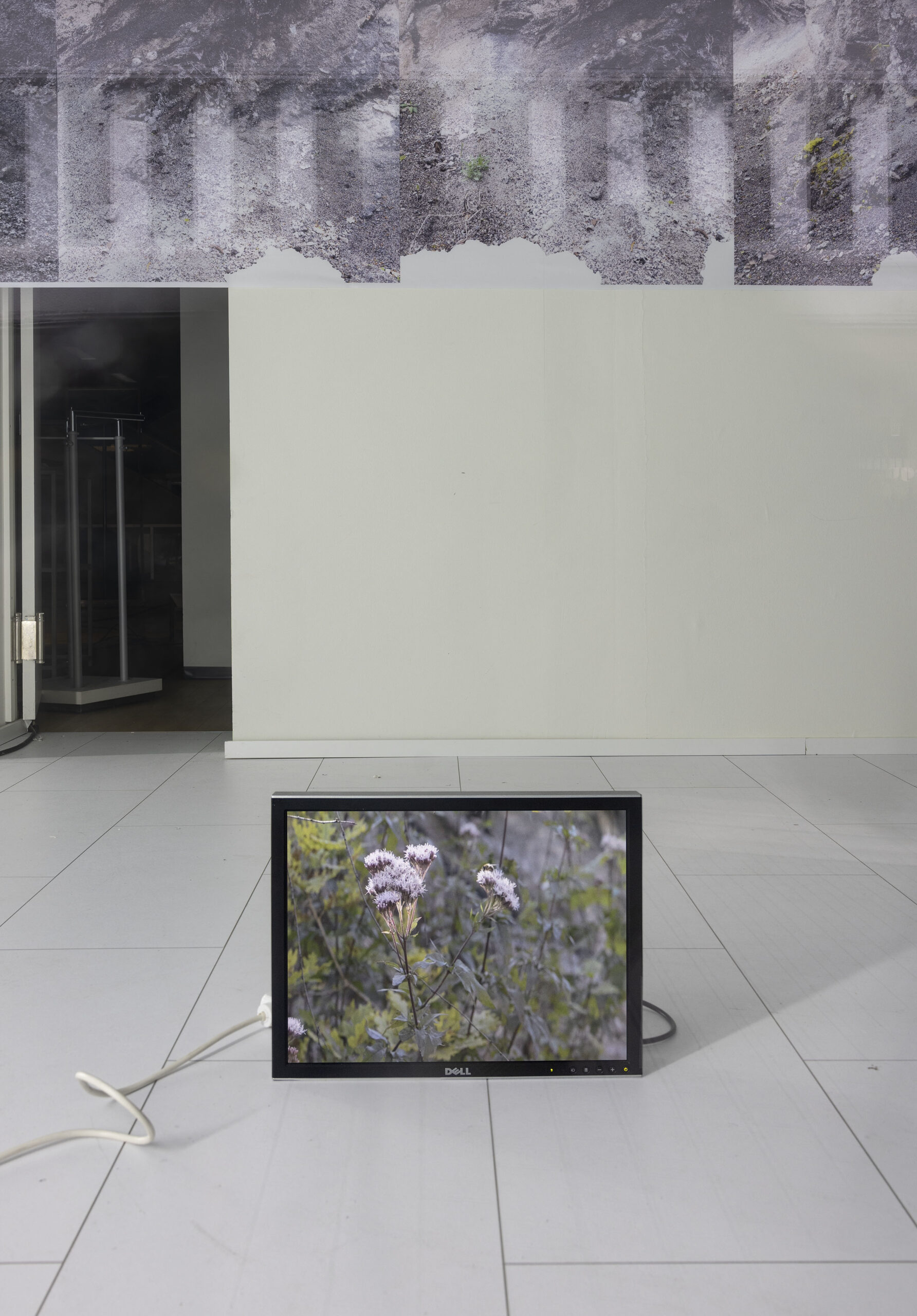



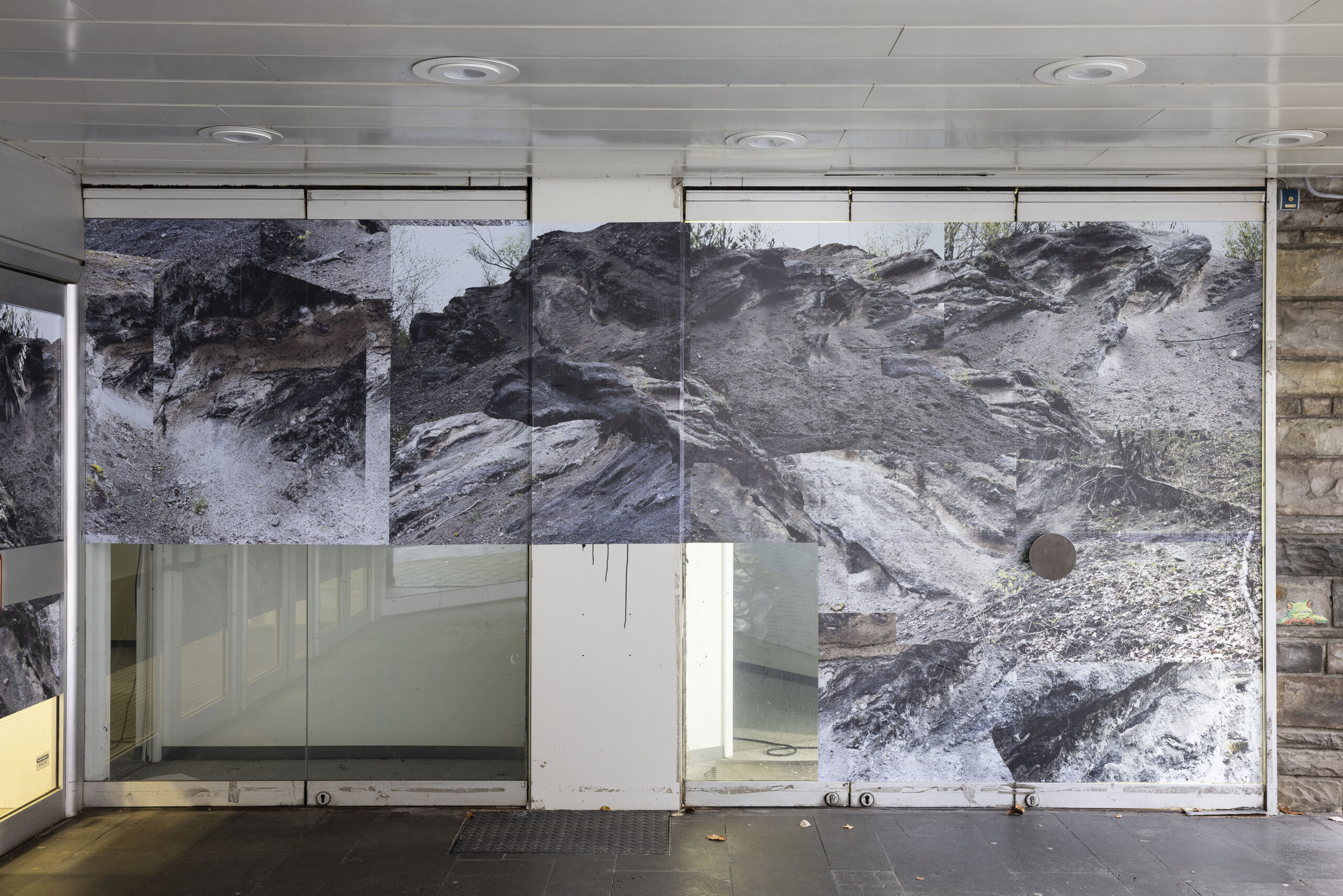
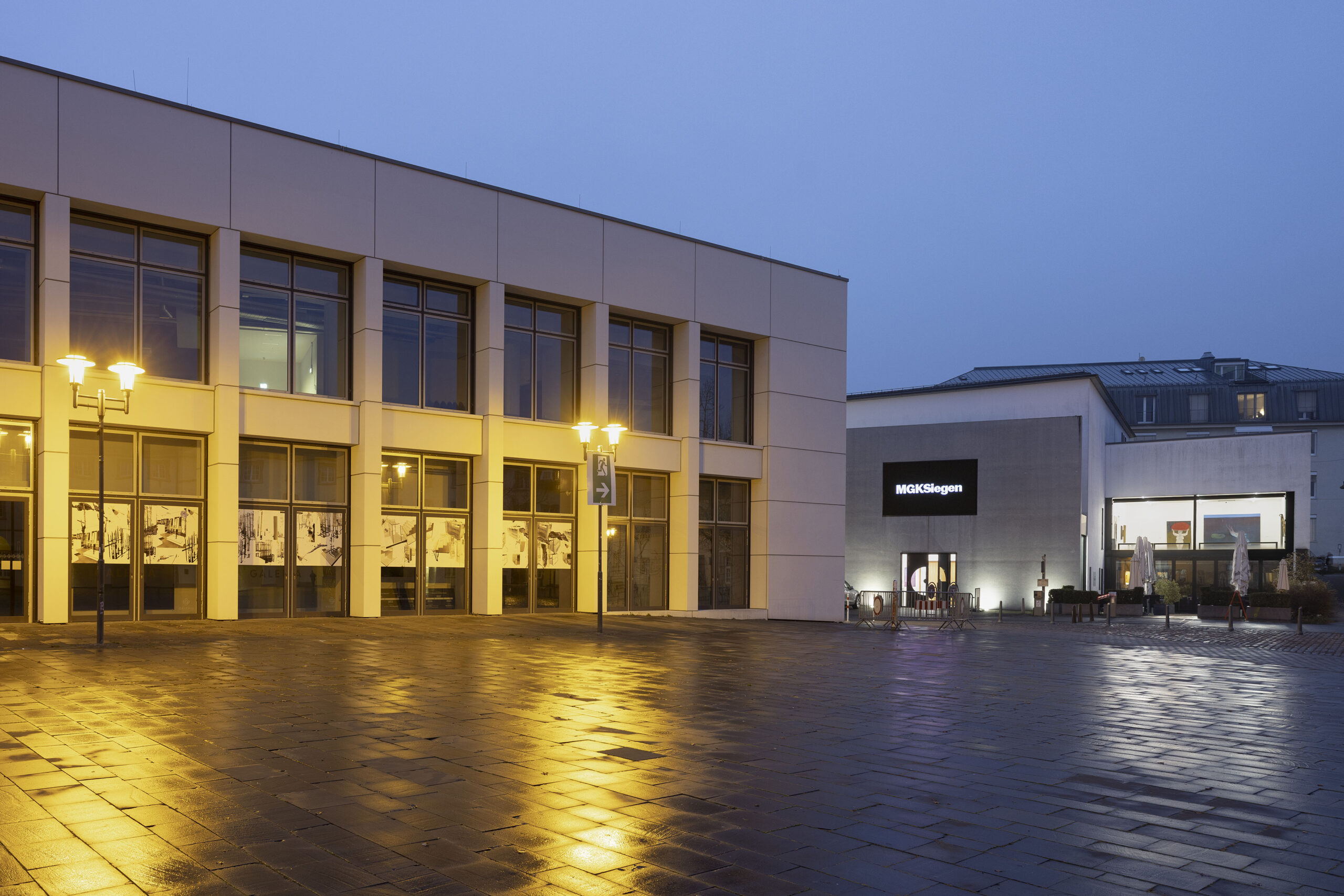
Photos: Philipp Ottendörfer
Introductory text to the exhibition
Hey Monte Schlacko, Dear Slagorg stretches around the former department store like a metallurgical rind. Large-format prints on partly transparent textiles and papers are attached to the building in different layers. The photographs were taken at different times of the year. They show the flora and fauna that has settled on the gray slag, including many mosses and lichens. Kriemann’s photographs examine the nature of the plants and the slag. Layer by layer, organisms are revealed that are interwoven both metallurgically and botanically. They stand for worlds of life yet to be named, which emerge from the countless slag heaps, clearings and mountains of garbage of consumer society.
Hey Monte Schlacko, Dear Slagorg brings different layers from the periphery into the center: the sparse flora, the slag from the blast furnaces and the topography of the “Siegen Fujiyama.” The surrounding countryside, the remnants of past industrial production, meet the built mass of an era of consumer culture that is also in a state of upheaval in the city center. For with the materials, furniture and exhibitors left behind in the former Karstadt building, the installation develops into a hybrid being that is not yet precisely defined: Slagorg.
With its overlays and vistas, the presentation makes direct reference to the architectural structures of the former department store. Béton Brut suddenly resembles bursting slag. Polygonal textile prints on the façade, stretched in niches and in front of the shop windows, meet classic image formats, color photographs on thin paper and projections inside the display cases. Historical photographs from Siegen and recent film footage from Kharkiv (Ukraine) expand this artistic dialog. The archive photographs of rare flowers taken by Siegen photographer Otto Arnold (1881-1944) in the early 1930s open up a landscape panorama that is as historical as it is speculative. In this landscape, the plants are the protagonists of a harsh and sensitive environment. In the evening hours the photographic contributions are complemented by video projections by artist Aleksander Komarov, who turns his attention to the ruderal plants of fallow land in the war-torn city.
As the title of the project suggests, the artist develops new visual languages and forms of translation in her engagement with these specific places, which demand a different physical experience. Hey Monte Schlacko, Dear Slagorg wants to be climbed over the steep pedestrian zone and circumnavigated several times. Kriemann creates an openness in thinking and speaking, to offer ambiguities instead of certain answers. The term Slagorg, which is made up of the words “Slag = slag” and “org = organism”, symbolizes the blurring of such a boundary that cannot be clearly defined and the interplay between botanical organisms and anthropocene interventions by humans. Specifically, Kriemann asks about the future transformation and significance of plants in a living world that has been changed by humans. What does it mean for a plant to grow on a slag heap? How does this influence our understanding of nature and human?
Szenography and production: Leia Walz
Co-Production: Lena Fließbach
Video installation: Aleksander Komarov
Media reviews
- e-flux: Susanne Kriemann: Hey Monte Schlacko, Dear Slagorg
- Radio Siegen: Die Schaufenster des leerstehenden Karstadt-Gebäudes in Siegen sind zur Ausstellungsfläche geworden
- Mutual Art: Susanne Kriemann: Hey Monte Schlacko, Dear Slagorg
- KUNSTFORUM International: Susanne Kriemann gewinnt Sieger Residenz-Stipendium
- kunstmarkt.com: Susanne Kriemann ist Artist in Residence in Siegen
- Siegener Zeitung: Der Karstadt-Leerstand wird zur Leinwand für den Monte Schlacko
- Rhein-Zeitung: Den „Monte Schlacko“ zu Kunst gemacht
- Siegener Zeitung: Susanne Kriemann hebt Grenzen zwischen Mensch und Natur auf
- Rhein-Zeitung: Auch Spaziergänge geplant
A project realized as part of the artist-in-residence program “Artist in Residence Siegen” of the University of Siegen & the Museum für Gegenwartskunst Siegen (MGKSiegen).
The University and the Museum would like to thank the Rolf H. Brunswig Stiftung Berlin, the Sparkasse Siegen, the Krombacher Brauerei, the Lions Club Siegen and Coatinc Siegen GmbH for their support of the program in the form of generous financial support for the residency year.
